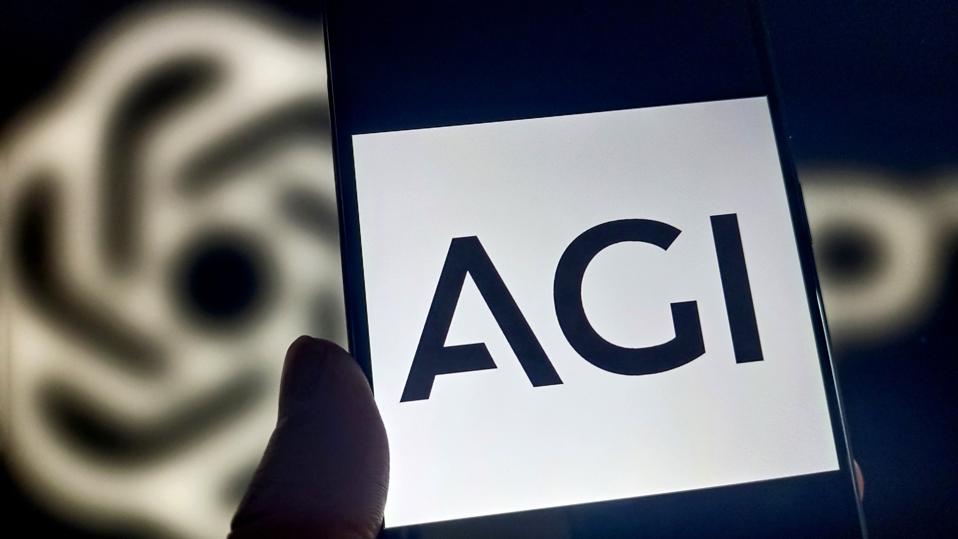The achievement of Artificial General Intelligence (AGI) has been portrayed as a single, defining moment. A lightning bolt, where machines would suddenly match or outstrip human intelligence across the board. A clean, dramatic event. But if you look around today, that idea feels more like science fiction than science fact.
What we are seeing is something far less cinematic but far more real. A gradual, uneven rise of AI capabilities. AI has already overtaken some areas of human intelligence.
OpenAI recently launched its O3 AI model as a successor to the already impressive GPT-4, and it has garnered significant attention. If you entrust it with a complex digital project, such as launching a startup complete with branding, market research, a financial model, and even a working prototype, it can deliver results with a speed and depth that few humans can match. It plans. It reasons. It adapts. It creates.
On the other hand, it can struggle with common-sense tasks, something a teenager could breeze through. It is a humbling reminder that even the smartest machines are not omnipotent.
This uneven progression of AI capabilities makes one thing clear. Waiting for a perfect all-encompassing AGI moment is a fool’s game. We are already living through the early days of AGI, just not the way we imagined.
In practical terms, O3 could already be AGI for most people. When you look at what O3 can do in digital environments, it is performing at or above human levels across a wide swath of tasks. Coding. Data analysis. Business strategy. Creative writing. If the work happens primarily on a screen, O3 is already a formidable competitor.
Profound Implications For Education
The skills that once defined intellectual achievement, careful research, critical analysis and structured writing are no longer uniquely human. AI can easily handle or even surpass these skills.
Educators face a hard truth. Teaching students to master tasks that AI can now automate is setting them up to compete in a game they are unlikely to win. Instead, education must pivot sharply. We need to teach students how to collaborate with AI, not compete with it.
Students must learn how to direct AI, how to question and verify its outputs and how to use it as a partner in achieving broader human-centred goals. The classroom must move beyond task execution to cultivating human strengths.
Some will argue that AGI must mean more than digital smarts. True human intelligence includes emotional depth, consciousness and sensory experiences. They are not wrong. Today’s AI, even O3, has no real emotions or self-awareness.
But here is the thing. A massive and growing chunk of modern work, writing reports, designing plans, analyzing data and building apps, happens entirely within digital frameworks. In that world, practical intelligence is what counts and O3 is already reshaping this landscape.
This means that AGI is not some far-off possibility. It is emerging right under our noses, unevenly but relentlessly. For many people, in many fields, human-level AI is already here.
The Ripple Effects Are Only Beginning
Across industries, knowledge work is being transformed. Roles in law, marketing, journalism, finance and education are evolving at breakneck speed. The students of today are stepping into a world where adaptability, resilience, emotional intelligence and ethical judgement will matter more than memorizing facts or following old playbooks.
Crucially, we still need humanity, perhaps more than ever. AI’s unevenness means there will always be cracks where human judgement, empathy and ethics are indispensable. Teachers are not going away. They are becoming more important as guides, mentors and ethical stewards.
Agentic Behaviour
O3 and future models will not just answer questions or complete tasks. They will pursue goals, solve problems and innovate independently. This “agentic” behavior will speed up societal change even further.
Educational institutions must be ready. Shorter innovation cycles. Faster obsolescence of old curricula. A constant need to rethink what and how we teach.
We can no longer afford to prepare students for a stable world. We must prepare them for a dynamic, uncertain AI-infused reality where human insight, creativity and compassion are not just valuable. They are essential.
Now what?
Recognizing O3 and models like it as early AGI forces us to shift our thinking. It is not about passively waiting for some mythical “AGI moment”. It is about actively engaging with a world where machines can already perform many tasks we once considered uniquely human.
It is about asking the hard questions. How do we ensure our students become not just users of AI but wise leaders and thoughtful stewards of its power? How do we build a future where technology enhances rather than diminishes our shared humanity?
The rise of OpenAI’s O3 is not just a technological milestone. It is a wake-up call. It demands that educators, policymakers and society as a whole confront the messy, uneven, exhilarating reality of AGI’s arrival.
It is time to stop waiting for the moment.

